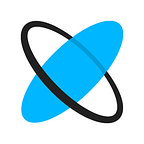Telemedicine app for more accurate identification of severe brain conditions
Technological solutions for the remote provision of accessible healthcare services are becoming more common. Technological progress, the constantly changing functionality of smartphones, and the great role of digitization have transformed healthcare services and changed the ways of interaction between clinicians and patients. Researchers predict the global telemedicine market to grow at an approximate CAGR of 37.7% through 2025. And according to studies of 2020, about 59% of respondents would choose remote communication with their attending physician over an in-person visit.
Telemedicine applications are ubiquitous in the healthcare industry and assist medical professionals, individuals, and third parties such as insurance companies, manufacturers, labs, logistic agencies, and others. Healthcare apps help register new patients, correctly process medical records, speed up accurate diagnosis, and prescribe appropriate treatment.
In the following overview, we will look closer at a telemedicine application custom designed and implemented to assist healthcare professionals both in accurate identification and treatment of traumatic brain conditions. The app helps digitize and manage medical records to provide medical care.
The project’s main goals
Having the field knowledge and experience as well as interest in delivering telemedicine solutions, our team took over this project to design and develop a tailor-made mobile application for simplified data management. Our engineers were working on a robust app integrated with measuring devices, which identify brain conditions such as Parkinson’s, Alzheimer’s, and ADHD.
Our client provided clinics with specialized measuring devices, which help detect abnormal brain conditions. The integration of those had been the most complex part of the whole project due to the unique data formats, which we have investigated to create an approach for their smooth extraction.
If to sum up, we created a custom mobile application, which can:
- Quickly connect to medical measuring devices via Bluetooth
- Extract, process, and display health indicators to facilitate insight-driven decision-making
The functionality in detail
Our client was working towards using specialized medical measuring devices that detect strange blink patterns. They needed a solution, which would facilitate early disease detection by optimizing data management.
Here’s a step-by-step explanation of the whole process:
- The clinician carefully stimulates the patient’s blink reflex using a special headset
- The integrated high-speed cameras capture every little detail
- The patient’s blink reflex is measured and automatically transferred to the secure cloud storage to be further reviewed and analyzed
- The custom telemedicine application is utilized to manage the extracted health indicators
But let’s look closer at the core functionality associated with data processing and management.
The solution includes the following functionality:
- User authorization
To ensure data safety and quality, we implemented user authorization as one of the core functions.
- Device management
Authorized users can add, select, edit or delete the medical measuring devices connected to the app.
- Subject management
Medical personnel can filter, add, edit or delete patient profiles.
- Scan management
Medical staff can select scan types, and take, cancel, redo and save new scans.
Building a telemedicine app for streamlined data management: Core challenges
The most critical parts of the healthcare project were mostly related to:
- Smooth scanning and connection
The project’s main challenge was ensuring the integration of the mobile solution with a non-standard device. We picked Core Bluetooth for the accurate investigation of the data formats, smooth scanning and connection, and further data extraction.
2. Database structure
Another issue of the healthcare project was identifying and structuring the various data tablets and relations. We implemented Core Data and incorporated a custom data wrapper for uncomplicated data retrieval, addition, filtering, and deletion.
Another thing we’ve been focusing on was the user interface, which had to be intuitively simple to navigate. Using the UIKit framework, custom built UI elements and the coordinator pattern, we designed and delivered an easy-to-understand user interface, which assists healthcare professionals in their day-to-day work.
The value of implementing a custom telemedicine application
At the end of the project, we built a solution with the necessary functionality to streamline data management. The client can now sell the mobile app to clinics specializing in biotechnology research or any medical providers interested in process optimization.
The solution:
- Simplifies investigation, accurate diagnosis, and treatment
Healthcare professionals can review, analyze, update and share the patient’s medical records via smartphone. This means improved communication and cooperation between involved medical personnel, as well as more thought-out decision-making.
- Increases the overall productivity of the medical personnel
The solution significantly optimizes routine processes, including manual data entry, and reduces human error. This helps overwhelmed clinicians improve communication with patients and colleagues, and, accordingly, provide better medical services.
Final words
With today’s technological progress rapidly entering every industry, a custom-designed telemedicine application is an indisputable necessity for a healthcare provider to eliminate human error and remain highly competitive. The implementation of the right tools saves resources, provides for data quality and accessibility, reduces risks, and helps medical companies to adhere to regulations.
Even greater business benefits are achieved by applying cutting-edge technologies such as:
- Artificial Intelligence, Machine Learning, and NLP
- Computer Vision
- Augmented and Virtual Reality
- IoT (Internet of Things)
- Cloud solutions
- Blockchain technology
As stated by Statista in 2018, 58% of US respondents would use digital means for their medication consultation. In 2020, when the live visits were at their lowest, 41% of US adults went for remote consultations for chronic condition management.
Now consider the fact that these are numbers of 2018–2020, when the Covid-19 pandemic had just broken out. That means, the percentage of people that choose remote communication over an in-person visit should have notably grown by today.
Using the latest technologies in the healthcare industry means providing better and more reliable patient care. Telemedicine benefits both patients and clinicians who can rely on robust tools, which help them concentrate more on what matters the most.
